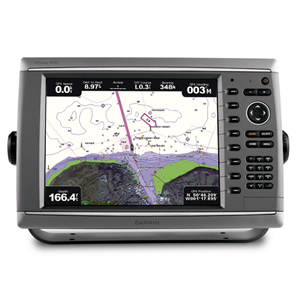If you send out an automated distress call with the red button on your vhf radio, it only sends a distress call, but no position information. By interconnecting a GPS unit to the radio, it will also send you currrent position information as well:
Classes of Digital Selective Calling
The DSC protocol is defined by ITU-R Recommendation M.493 (series), available from the International Telecommunications Union in Geneva, Switzerland DSC operation is defined by ITU-R Recommendation M.541 (series).
Class A:
Distress call
All-ships call
Individual station call
Semi-automatic/automatic service call
Use of distress, urgency, safety and routine priorities
Nature of distress
Distress coordinates
Time for last (distress) position update
Type of subsequent communications
Distress relay
Distress acknowledgment
Test call (for MF/HF only)
Radio frequency or channel
Display
Receive geographical area calls
Alarm
Optional means for canceling a distress alert
Polling
Position acknowledgement
Test call
Test acknowledgement
Data
Data acknowledgement
All DSC options provided. Required on MF/HF and VHF radios used by SOLAS-regulated ships. Class A includes polling and vessel tracking, data, and numerous other functions in addition to voice.
Class B:
Required on VHF and MF radios used by SOLAS-regulated ships, though most such radios in fact meet Class A. Class B required capabilities include:
Distress call
All-ships call
Individual station call
Semi-automatic/automatic service call
Use of distress, urgency, safety and routine priorities
Nature of distress
Distress coordinates
Time for last (distress) position update
Type of subsequent communications
Distress relay
Distress acknowledgment
Test call (for MF/HF only)
Radio frequency or channel
Display
Receive geographical area calls
Alarm
Optional means for canceling a distress alert
Back to Classes
Class D:
Minimum DSC capability for VHF marine radios carried by recreational boaters, commercial fishing vessels, and other non-SOLAS regulated vessels. Class D required capabilities include:
Distress call
All-ships call
Individual station call
Use of distress, urgency, safety and routine priorities
Nature of distress
Distress coordinates
Time for last (distress) position update
Type of subsequent communications
Radio VHF channel
Display
Receive distress relay and distress acknowledgment calls
Alarm
Distress acknowledgement (receive)
Geographical area call (receive)
Test call
Test acknowledgement

The above radio when connected to GPS will also display your lat/lon and transmit this with your automated distress call, a nice feature when you are busy repairing your bilge pump.
Classes of Digital Selective Calling
The DSC protocol is defined by ITU-R Recommendation M.493 (series), available from the International Telecommunications Union in Geneva, Switzerland DSC operation is defined by ITU-R Recommendation M.541 (series).
Class A:
Distress call
All-ships call
Individual station call
Semi-automatic/automatic service call
Use of distress, urgency, safety and routine priorities
Nature of distress
Distress coordinates
Time for last (distress) position update
Type of subsequent communications
Distress relay
Distress acknowledgment
Test call (for MF/HF only)
Radio frequency or channel
Display
Receive geographical area calls
Alarm
Optional means for canceling a distress alert
Polling
Position acknowledgement
Test call
Test acknowledgement
Data
Data acknowledgement
All DSC options provided. Required on MF/HF and VHF radios used by SOLAS-regulated ships. Class A includes polling and vessel tracking, data, and numerous other functions in addition to voice.
Class B:
Required on VHF and MF radios used by SOLAS-regulated ships, though most such radios in fact meet Class A. Class B required capabilities include:
Distress call
All-ships call
Individual station call
Semi-automatic/automatic service call
Use of distress, urgency, safety and routine priorities
Nature of distress
Distress coordinates
Time for last (distress) position update
Type of subsequent communications
Distress relay
Distress acknowledgment
Test call (for MF/HF only)
Radio frequency or channel
Display
Receive geographical area calls
Alarm
Optional means for canceling a distress alert
Back to Classes
Class D:
Minimum DSC capability for VHF marine radios carried by recreational boaters, commercial fishing vessels, and other non-SOLAS regulated vessels. Class D required capabilities include:
Distress call
All-ships call
Individual station call
Use of distress, urgency, safety and routine priorities
Nature of distress
Distress coordinates
Time for last (distress) position update
Type of subsequent communications
Radio VHF channel
Display
Receive distress relay and distress acknowledgment calls
Alarm
Distress acknowledgement (receive)
Geographical area call (receive)
Test call
Test acknowledgement

The above radio when connected to GPS will also display your lat/lon and transmit this with your automated distress call, a nice feature when you are busy repairing your bilge pump.



Comment